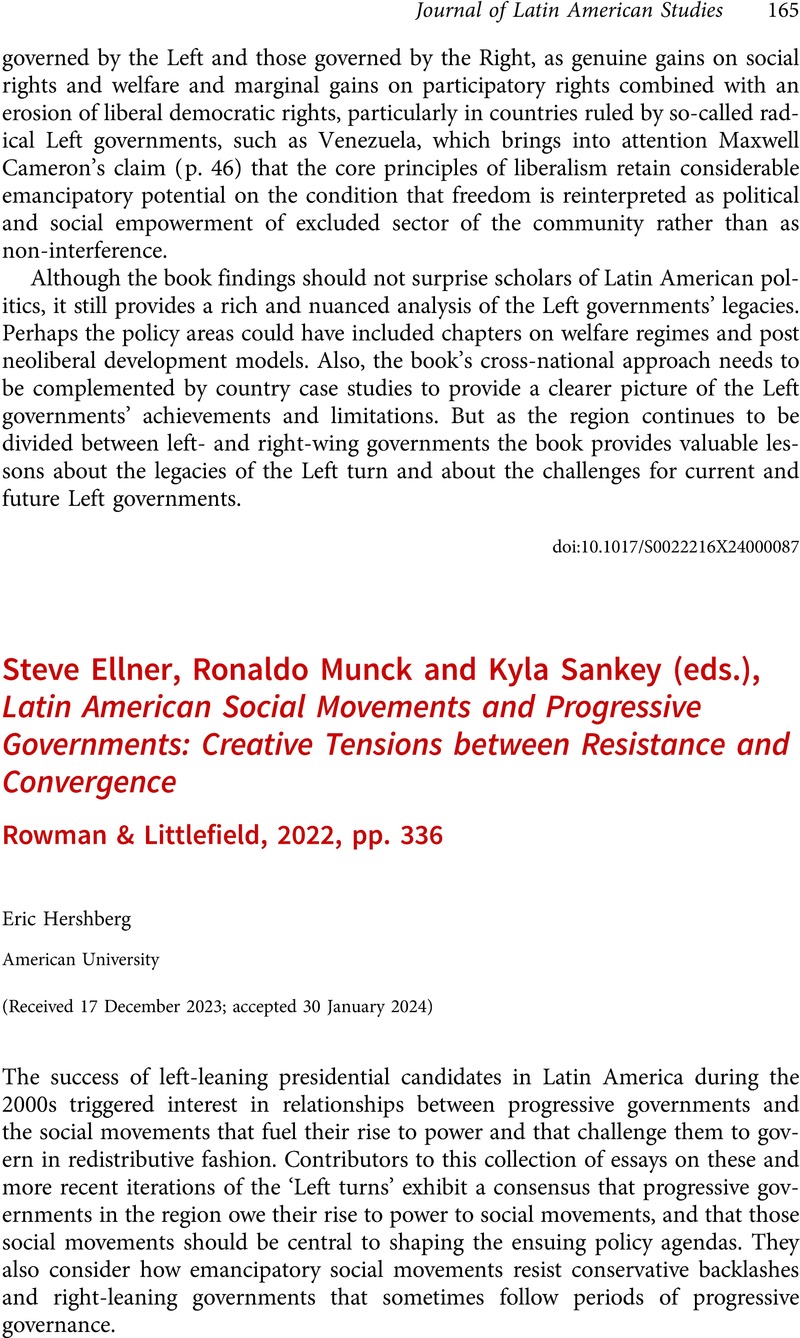No CrossRef data available.
Article contents
Steve Ellner, Ronaldo Munck and Kyla Sankey (eds.), Latin American Social Movements and Progressive Governments: Creative Tensions between Resistance and Convergence Rowman & Littlefield, 2022, pp. 336
Review products
Steve Ellner, Ronaldo Munck and Kyla Sankey (eds.), Latin American Social Movements and Progressive Governments: Creative Tensions between Resistance and Convergence Rowman & Littlefield, 2022, pp. 336
Published online by Cambridge University Press: 12 March 2024
Abstract
An abstract is not available for this content so a preview has been provided. Please use the Get access link above for information on how to access this content.

- Type
- Reviews
- Information
- Copyright
- Copyright © The Author(s), 2024. Published by Cambridge University Press



